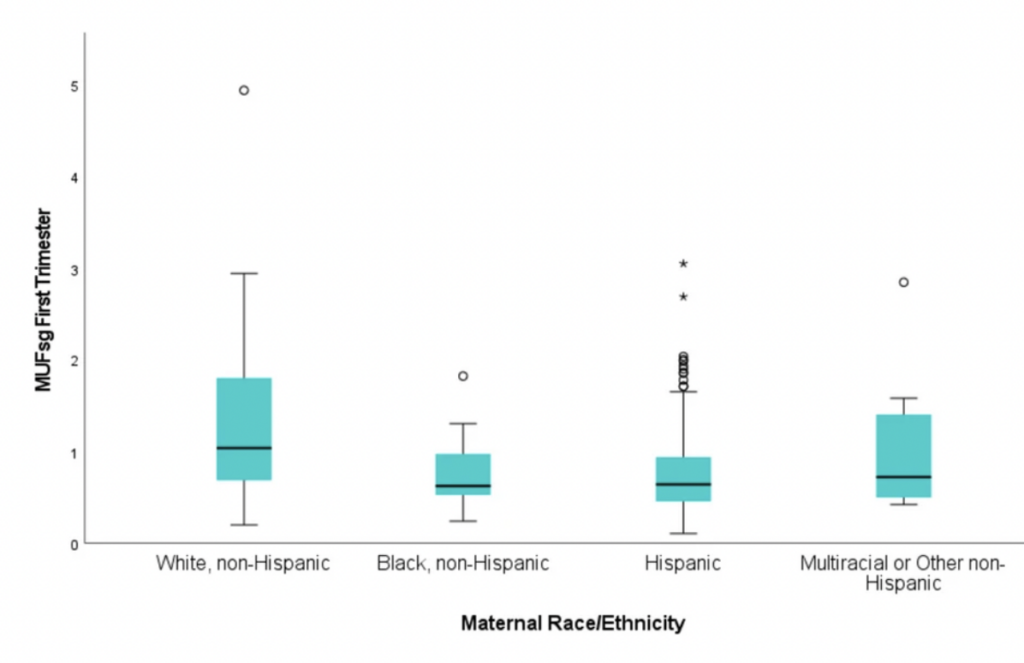Fundraising Update
Since Sunday, we’ve raised $520 from 14 supporters, bringing our current total to $1,401 from 31 donors towards FAN’s 2024 operating budget. THANK YOU ALL!
Please help FAN continue to share, promote, archive, and generate fluoridation news and research. Your support makes it possible to send out press releases to educate journalists, to have an email database to keep supporters informed, to produce informative videos, and to write regular newsletters featuring scientific analysis, advocacy alerts, news, and legal updates.
If you’ve found value in any of this work, please consider making a tax-deductible donation to our 2024 operating budget so we can continue to develop and improve upon these efforts. Click here to use our secure online donation page.
*If your browser cannot open our new fundraising page, click here.
You can also donate by check, payable to: Fluoride Action Network
Checks can be mailed to:
Fluoride Action Network
PO Box 85
North Sutton, NH 03260
Pregnant Women in Los Angeles Have Same Levels of Fluoride as Counterparts in Mexico and Canada

The urinary fluoride concentration in pregnant women that is associated with reduced intelligence of offspring in studies in Mexico and Canada has been found in pregnant women in Los Angeles, according to a new report.
Nearly 500 women participants in the Maternal and Developmental Risks from Environmental and Social Stressors (MADRES) cohort were tested for urinary fluoride during the first and/or third trimesters in the study by Ashley J. Malin of the University of Florida College of Public Health and colleagues from several other universities in the United States. Their report was published in Environmental Health October 26.
The authors found that maternal urinary fluoride (MUF) was “higher among older participants, those with higher income, and White, non-Hispanic participants than Hispanic participants.”
“Lower urinary fluoride levels among Hispanic and non-Hispanic Black participants in MADRES compared to non-Hispanic White participants may reflect lower tap water consumption or lower fluoride exposure from other sources,” they note.
“Interestingly, Hispanic women in MADRES tended to have comparable third trimester [MUF] levels (median = 0.76 mg/L) to women in Mexico, while White non-Hispanic women in MADRES had higher levels (median = 1.32 mg/L),” report the authors.
In addition to finding fluoride levels with medians of 0.65 milligrams per liter (mg/L) for the first trimester and 0.8 mg/L in the third trimester, the authors report that higher urinary fluoride levels were associated with higher lead levels “Children residing in fluoridated communities within the US have been shown to have higher blood lead levels than children residing in communities not treated with fluoridation chemicals. The corrosion of lead-bearing plumbing by fluoridation chemicals administered along with disinfecting agents such as chloramine is one possible pathway by which fluoride and lead co-exposure may occur,” they conclude.
Source: https://doi.org/10.1186/s12940-023-01026-2
Fluoride Exposure Found to Alter Structure, Biochemistry of Placenta in Rats

A study of pregnant rats by researchers at Mexico’s National Polytechnic Institute found that exposure to environmentally relevant levels of fluoride results in morpho-structural alterations in the placenta and non-monotonic [atypical dose-response] increases in levels of malondialdehyde (MDA) and vascular endothelial growth factor-A (VEGF-A), according to a new report.
The researchers found that MDA, a measure of lipid oxidation, and the endothelial growth factor were significantly higher at the lower level of exposure, 2.5 milligrams per kilogram body weight per day, than at the higher level, 5 milligrams. They also examined the density of blood vessels in the placenta, and reported, “Our results show a marked decrease in vascular density in the fluoride-treated groups compared to the control.”
The paper includes annotated micrographs showing significant alterations at the cellular level including the migration of specialized cells. “This migration serves as a compensatory mechanism to offset the reduction in nutrient exchange and maternal blood flow to attend foetal demands and potentially mitigate the effects of impaired foetal growth,” note the authors.
“These findings are indicative of alterations in both placental morphology and efficiency, modifications that are related to later developmental defects,” conclude the authors.
Their report was published October 9 in Biological Trace Element Research.
Source: https://doi.org/10.1007/s12011-023-03916-5
Albany Common Council Appears Set to Adopt Fluoridation

Albany, NY may become the first major city to adopt water fluoridation since the release of the National Toxicology Program’s landmark study that concluded prenatal exposure to fluoride in drinking water at levels found in community water systems can reduce children’s intelligence as measured in reduced IQ scores.
The Times Union newspaper reports nine of fifteen City Councilors in Albany back the measure to adopt fluoridation. A press release from the American Dental Association quotes Mayor Kathy Sheehan as supporting it. Historically, a long line of Albany mayors has blocked the adoption of fluoridation there, according to the newspaper.
The proposal is expected to reach a Council vote by the end of November.
The water fluoridation policy has long served to distract public attention from the fact that the vast majority of dentists refuse to take Medicaid in their practices.
In the ADA’s press release the association quotes American Fluoridation Society president Johnny Johnson, Jr. as saying, “As dentists, we are advocating for less business,” perhaps inadvertently reflecting dentistry’s disinterest in serving Medicaid patients.
Source: https://www.timesunion.com/health/article/fluoride-finally-coming-albany-water-supply-18406217.php
Plants Recruit Bacteria to Their Roots to Protect Them From Fluoride

In an extensive review in Frontiers in Microbiology, scientists from several Indian institutions and Iowa State University document the role of Plant Growth Promoting Rhizobacteria (PGPR), several types of prokaryotes that live on the roots of plants, and how they can protect the plants from fluoride in agricultural soils.
“Many studies reveal that PGPRs have developed fluoride defense mechanisms, which include efflux pumps, Intracellular sequestration, enzyme modifications, enhanced DNA repair mechanism, detoxification enzymes, ion transporter/ antiporters, fluoride riboswitches, and genetic mutations,” write the authors.
While plants have their own fluoride-defense mechanisms, particularly exporter proteins that pump the fluoride molecules out of the cells, these groups of anti-fluoride bacteria provide additional means of defense against the environmental toxin.
The authors argue that removing fluoride from agricultural water is too labor-intensive and expensive, so that plant growth promoting bacteria should be developed to allow plants to grow properly in settings that must use water with high concentrations of fluoride.
“The resilience of microorganisms in harsh environmental conditions is truly remarkable. However, the proliferation of natural fluoride levels in soil can have devastating effects on plant health. Fortunately, recent research has indicated that PGPRs have the ability to endure high concentrations of fluoride, offering a promising solution for bioremediation,” conclude the authors.
Source: https://doi.org/10.3389/fmicb.2023.1271034
New Zealand Court Rules Fluoridation Mandate Unlawful

The Director-General of Health’s July 2022 order for fourteen councils to fluoridate their water supplies was in error because it did not justify the action as required by the Bill of Rights Act (BORA), High Court Justice Paul Radich ruled November 10.
The New Zealand Bill of Rights Act gives individuals the right to refuse medical treatment. The country’s Supreme Court had ruled in 2018 that fluoridation is a medical treatment, but that the government can compel its adoption.
“Friday’s significant High Court judgement will now require any new attempts by Councils to fluoridate their community’s water to be justified under Section 5 of BORA i.e. they will need to justify why this limitation, of such a fundamental right (not to be forced a medical treatment), should be violated,” wrote Fluoride Free New Zealand in a press release November 14.
Of the fourteen councils ordered to fluoridate last year, New Plymouth District Council had already begun fluoridation, according to a report on the Stuff.co website.
The case against the Director-General of Health was brought by a Christchurch-based natural health lobby group called New Health New Zealand.
“It should be perceived as a positive and integral part of a society in which fundamental rights are defined and cannot be limited arbitrarily,” wrote Justice Radich.
-https://fluoridefree.org.nz/high-court-finds-ashley-bloomfields-fluoride-directive-unlawful/
Historian Notes Dentistry’s Business Interests in Promotion of Fluoridation

Water fluoridation originated as a policy that supported dental business interests and enhanced the status of dentistry in the medical world, according to environmental historian Prof. Frank Zelko of the University of Hawaii in a recent article.
“One of the main reasons that fluoride was an attractive solution for caries was that it would not entail reforming the entrepreneurial, fee-for-service culture that dominated US dentistry. In fact, once freed from the mundane task of filling cavities, dentists could focus on more lucrative periodontic and cosmetic procedures,” writes Zelko.
Fluoridation became established, Zelko writes, because “it was a palliative that threatened no substantial economic interests and required no significant changes in dietary practices or food production. In short, it was the classic attempt at solving a complex problem with a cheap technofix.”
Zelko’s piece also contains a discussion of celebrity pediatrician Dr. Benjamin Spock’s support for fluoridation, noting “Spock and other proponents also seemed oblivious to—and strangely uncurious about—the source of all the fluoride that was needed to fluoridate thousands of water systems throughout the United States and beyond. Far from the pharmaceutical grade fluoride that was later added to toothpaste, the substance drip-fed into municipal water supplies is a raw and highly toxic by-product of the phosphate-fertilizer industry.”
Zelko’s wide ranging discussion of the causes of tooth decay, the history of fluoridation and the sociological context of the continuing struggle over use of the toxin appears in issue 4 of the Rachel Carson Center Review.
Source: https://springs-rcc.org/in-the-teeth-of-history/
•• Michael Dolan can be contacted at <mdolan.ecsn@outlook.com>
•• The archives of The Fluoridation Review are available at: https://
